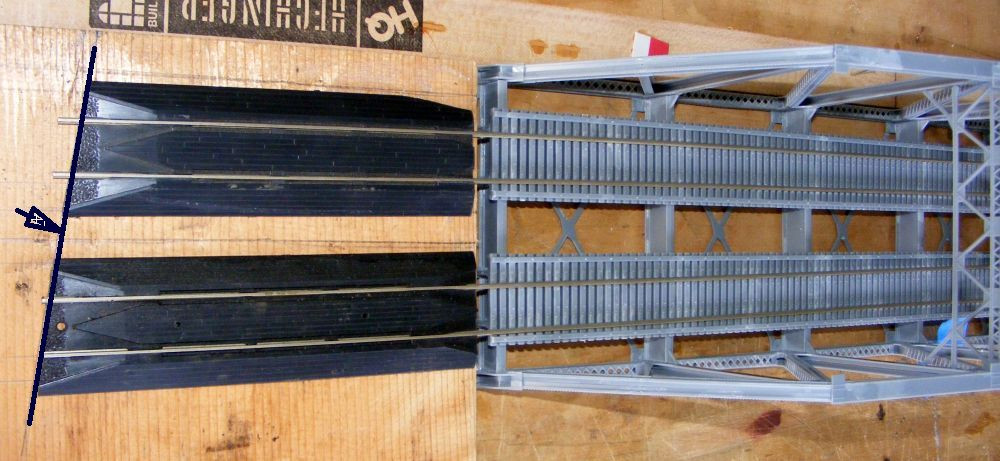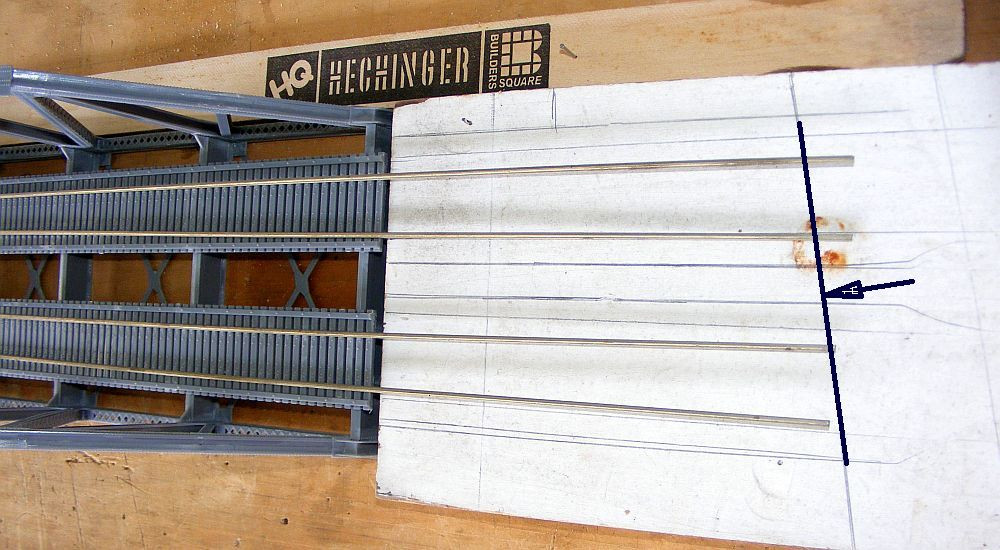I have 2 situations I need advice on,...gluing rail to polystyrene ties,..and gluing rail to wood ties. In both cases I am talking about NS code 100 rail.
Gallows Turntable Bridge
I have this previously used gallows turntable bridge that had brass track nailed to the wood ties at 3 locations along the rail's length. I want to replace the brass track with NS, and I am not so sure I can get a good firm grip on the rail with those older tacks. In which case I have considered some sort of adhesive,...maybe just a few spots along the 9" length of the rail?
What might be the best adhesive for metal rail to wood ties?
Walther's Double Track Bridge
I just recently assembled this Walther's bridge that came plastic tie strips that accept ones own rails, both the main lines and the safety rails. It has very small tits that assist in locating the track rails very exactly, BUT do not assist in holding the rail down,....it needs to be glued down.
The ties as well as the whole bridge is styrene plastic, so what best glue to use here?
I also intend on painting the whole bridge, and unfortunately I have already glued in the tie strips. So I am guessing I need protect that spots where I would be gluing the rail to the plastic, OR take that 'painted condition' into account when I consider glue type for the job?
Gallows Turntable Bridge
I have this previously used gallows turntable bridge that had brass track nailed to the wood ties at 3 locations along the rail's length. I want to replace the brass track with NS, and I am not so sure I can get a good firm grip on the rail with those older tacks. In which case I have considered some sort of adhesive,...maybe just a few spots along the 9" length of the rail?
What might be the best adhesive for metal rail to wood ties?
Walther's Double Track Bridge
I just recently assembled this Walther's bridge that came plastic tie strips that accept ones own rails, both the main lines and the safety rails. It has very small tits that assist in locating the track rails very exactly, BUT do not assist in holding the rail down,....it needs to be glued down.
The ties as well as the whole bridge is styrene plastic, so what best glue to use here?
I also intend on painting the whole bridge, and unfortunately I have already glued in the tie strips. So I am guessing I need protect that spots where I would be gluing the rail to the plastic, OR take that 'painted condition' into account when I consider glue type for the job?



